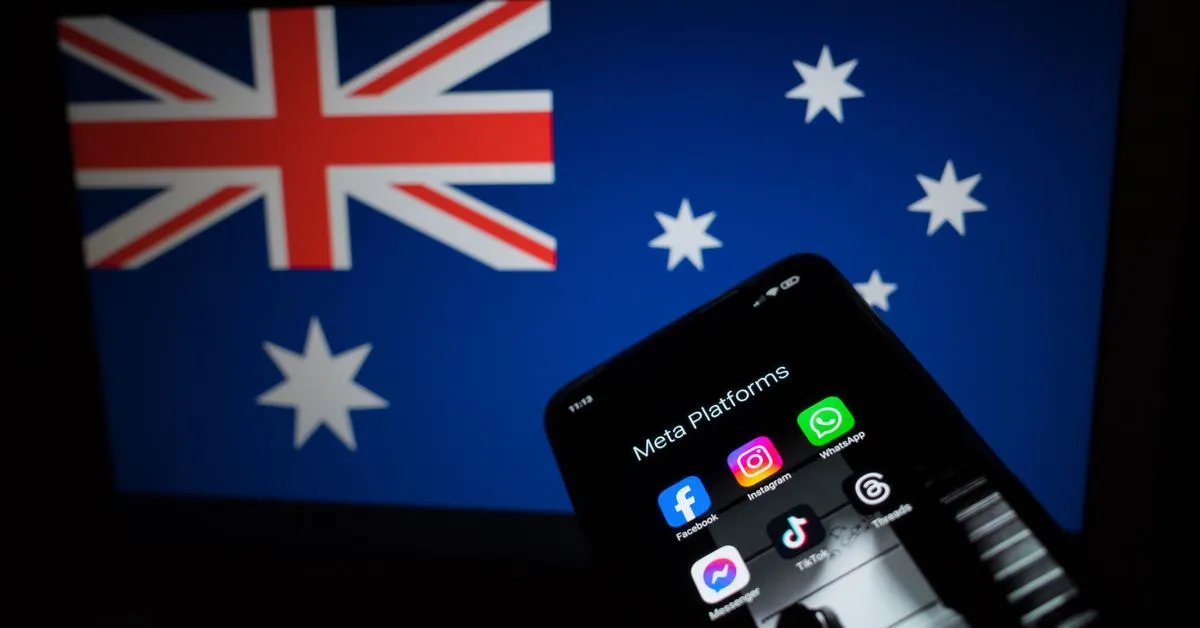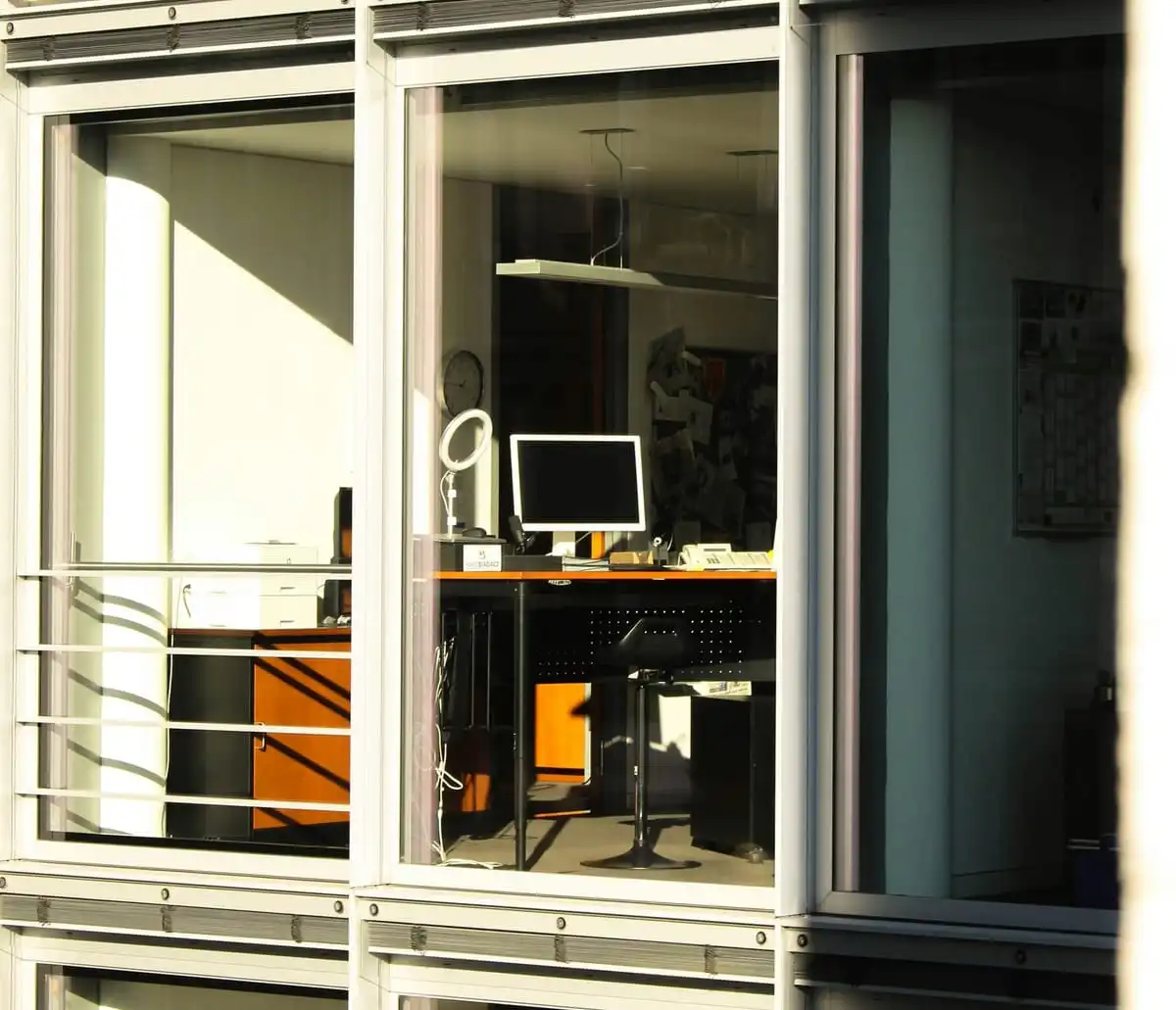Satellite images show the IDF has destroyed hundreds of buildings in north Gaza as it creates the divide.

No, this is specifically about consequences of chinese policy where foreign companies are required to have a domestic partner to be able to do business at all.
Now platforms have to figure out how to enforce it.

A study confirms that no major language model is neutral and that its biases tend to be constant in the same direction

Nintendo Switch ending online support exposes fragility of gaming partnerships in China
It has been reported that Nintendo announced a discontinuation of its online services for the Nintendo Switch in China.

Politicians lie so I’m mostly interested in outcomes, not the narratives that politicians use to make things happen. Why would I care that something I want and is mostly outside of my control happens for the wrong reasons?
They will do what’s most profitable. If domestic production becomes competitive someone will do it.
Cancer seems to be less of an issue with biologic DMARDs and with NSAIDs there are bigger cardiovascular issues to be worried about. But either way it’s trading bad outcomes.
My observation of online communities for chronic diseases is that there are some people that read new research papers and share new findings because there’s so little else they can do. Knowledge in those communities spreads fast (but so does bullshit unfortunately).
If you proposed something else that would uplift lower classes sooner they’d probably vote for it. What Democrats were offering wasn’t credible enough because people have been deceived for too long.
Are you arguing that tariffs and other market restrictions are ineffective at incentivising moving of production sites? I guess that’s why Biden lifted tariffs Trump imposed. Oh wait.
Or are you arguing that container ships full of plastic trash are good for the environment?
It’s a little bit of good news for folks with autoimmune diseases. I’ve been reading a lot on spondyloarthritis / psoriasis over the last couple of weeks (being tested for both) and this doesn’t appear to be common knowledge.
I’m not here to convince liberals that they should try to care for the poor. I’m here to argue that the jig is up - people are voting for literally anyone, including fascists, that promises to change the course.
Done, thanks for pointing this out.
Tariffs can serve as a stimuli to build out local manufacturing capacity, which sounds pretty leftist to me. I understand arguments for laissez faire policies but at heart they are liberal and not left. It’s the refusal to accept it that led to far right being as popular as it is.
Intel's $7.86 billion subsidy deal restricts sale of its manufacturing unit
cross-posted from: https://sopuli.xyz/post/19623231
> Nov 27 (Reuters) - Intel (INTC.O), opens new tab said on Wednesday its deal for $7.86 billion in U.S. government subsidies restricts the company's ability to sell stakes in its chipmaking unit if it becomes an independent entity. > > The U.S. Commerce Department announced the subsidy to Intel on Tuesday, part of $39 billion for the sector including Taiwan Semiconductor Manufacturing Co (2330.TW), opens new tab and others in an effort to revitalize chip manufacturing in the United States. > > Intel Chief Executive Pat Gelsinger in September said that the company planned to spin its chip manufacturing operations into a subsidiary, opens new tab and was open to taking on outside investors in the unit, called Intel Foundry. > > In a securities filing, Intel said on Wednesday the subsidies require it to own at least 50.1% of Intel Foundry if the unit is separated into a new privately held legal entity. If Intel Foundry becomes a public company and Intel itself is not the largest shareholder, the company could sell only 35% of Intel Foundry to any single shareholder before running into change-in-control provisions. > > Intel did not immediately respond to a request for comment on the disclosures. A Commerce Department spokesman said the government is negotiating change-in-control provisions with all direct grant recipients. > > Intel would need to comply with the restrictions to continue the company's $90 billion worth of projects in Arizona, New Mexico, Ohio, and Oregon and keep manufacturing cutting-edge chips in the U.S., according to the filing. Any changes in control could require Intel to seek permission from the U.S. Department of Commerce, the filing said.
Intel's $7.86 billion subsidy deal restricts sale of its manufacturing unit
Nov 27 (Reuters) - Intel said on Wednesday its deal for $7.86 billion in U.S. government subsidies restricts the company's ability to sell stakes in its chipmaking unit if it becomes an independent entity.
The U.S. Commerce Department announced the subsidy to Intel on Tuesday, part of $39 billion for the sector including Taiwan Semiconductor Manufacturing Co and others in an effort to revitalize chip manufacturing in the United States.
Intel Chief Executive Pat Gelsinger in September said that the company planned to spin its chip manufacturing operations into a subsidiary and was open to taking on outside investors in the unit, called Intel Foundry.
In a securities filing, Intel said on Wednesday the subsidies require it to own at least 50.1% of Intel Foundry if the unit is separated into a new privately held legal entity. If Intel Foundry becomes a public company and Intel itself is not the largest shareholder, the company could sell only 35% of Intel Foundry to any single shareholder before running into change-in-control provisions.
Intel did not immediately respond to a request for comment on the disclosures. A Commerce Department spokesman said the government is negotiating change-in-control provisions with all direct grant recipients.
Intel would need to comply with the restrictions to continue the company's $90 billion worth of projects in Arizona, New Mexico, Ohio, and Oregon and keep manufacturing cutting-edge chips in the U.S., according to the filing. Any changes in control could require Intel to seek permission from the U.S. Department of Commerce, the filing said.
Researchers working in Austria have observed in mice that some anti-inflammatories thwart the trick tumors use to evade immune defenses

When a DHL cargo plane crashed while approaching Vilnius airport on Monday, killing one of the crew, it looked like technical failure, but given that Russia was believed to be behind a series of incendiary devices which ignited on DHL flights and in warehouses this summer, inevitably many feared Mos...

When a DHL cargo plane crashed while approaching Vilnius airport on Monday, killing one of the crew, it looked like technical failure, but given that Russia was believed to be behind a series of incendiary devices which ignited on DHL flights and in warehouses this summer, inevitably many feared Moscow’s hand. The suspicion is likely to be the point. In the past year, the Russians have stepped up their disruptive activities in Europe, from cyber-attacks to assassinations, with the apparent aim of generating chaos and a climate of fear as much as anything else.
> Russia has outsourced its activity to a motley array of ‘patriotic hackers’ and outright cyber-criminals
In February, a Russian defector was gunned down in Spain, in what seems to have been a hit commissioned by Moscow but carried out by gangsters. In March, petty criminals hired by the GU, Russia’s military intelligence, torched Ukrainian-owned warehouses in Leyton, east London. Moscow was also blamed for a subsequent series of arson attacks across Europe on everything from Polish shopping malls to a German factory. In July, US and German authorities announced that they had foiled a Russian plot to assassinate Armin Papperger, CEO of the Rheinmetall armaments conglomerate, an outspoken supporter of Ukraine. Although the circumstances are still unclear, two telecommunications cables across the Baltic have just been severed in what could easily be sabotage.
Meanwhile, as the cabinet minister Pat McFadden warned the Nato Cyber Defence Conference in London this week, Russia has expanded its campaign of cyber-attacks. Some are essentially intelligence-gathering operations, but an increasing proportion seek to disrupt, such as the attacks on the Czech railways this year or the regular spates of fake bomb scares generating the kind of hypervigilance behind recent controlled explosions in Glasgow, Euston station and near the US embassy, and a major security alert at Gatwick airport.
How do the Russians manage to maintain such a tempo of attacks? In part, by outsourcing to a motley array of ‘patriotic hackers’ and outright cyber-criminals. This is not just confined to the online realm: as the MI5 director-general Ken McCallum warned last month, this year has seen ‘Russian state actors turning to proxies for their dirty work, including private intelligence operatives and criminals from both the UK and third countries’.
This is especially evident in the online world, with Russian ransomware gangs and other criminal hackers essentially being given a free pass so long as they are targeting the West. Yet it is also clear that criminals are being used more broadly, in everything from carrying out surveillance on behalf of Moscow’s intelligence agencies to covering walls across Europe with divisive and anti-Semitic graffiti, from planting firebombs to smuggling in sanctioned microchips.
It should not be a surprise that the Russians are turning to criminals and private investigators. After Russia’s full-scale invasion of Ukraine, some 750 Russian diplomats were expelled across the West. Since most spies work under diplomatic cover, this delivered a serious blow to Russia’s espionage networks. Yet we could hardly imagine that this would stop the Kremlin from trying to find new ways to operate. Many proxies are hired anonymously online, so that they may not even know they are doing Vladimir Putin’s dirty work. Some have been carrying out surveillance under the belief that their clients are convinced their spouses are cheating on them or their employees are stealing.
The real question is why Moscow has stepped up its campaign this year, and what it could possibly hope to achieve. Does it honestly believe that burning down a shopping centre or daubing some graffiti will really make any kind of meaningful difference?
The answer lies in Putin’s perception of the situation. He appears genuinely to believe that an implacably ‘Russophobic’ West is committed to confining or dismembering Russia, and that Ukraine is essentially little more than a weapon aimed at the Mother-land. Kyiv’s intelligence services have been conducting a series of attacks on Russian military targets, officers and outspoken cheerleaders for the war; this month, for example, a naval officer was killed when a bomb exploded under his car in Crimea. To Putin – a man who believes Ukraine is an artificial construct created by Lenin after the 1917 Bolshevik revolution out of ‘what is historically Russian land’ – these attacks could only be happening at our behest, or at least with our approval.
> The question is why Moscow has stepped up its campaign, and what it hopes to achieve
A hawkish Russian thinktanker close to the presidential administration spelled it out to me: ‘You think you can get Ukrainian terrorists to do your dirty work and that we’ll politely pretend you’re not behind it? It’s time you got to know what it feels like to be at war.’ Besides, he added: ‘What else are sanctions but economic and political warfare? You try to crash our economy and then whine if you get hacked?’
It seems that at some point in the middle of last year, a decision was made by the Kremlin to allow its intelligence agencies to go ‘a bit feral’, in the words of the MI6 director Sir Richard Moore. In part, this is simply revenge against Ukraine’s allies; but it is also something more strategic, what one could call the weaponisation of inconvenience. There is a sense in Moscow that the West has become too comfortable with the war, that we regularly write off a certain amount of money and part of our military arsenal to keep the Ukrainians fighting, without really feeling the costs. One could argue against this conclusion – ‘Ukraine fatigue’ is a growing challenge, likely to be magnified if Donald Trump unloads a greater share of the war’s costs on to Europe – but it seems to be a belief held in hawkish circles around Putin.
The campaign of cyber and proxy attacks is intended not only to further Moscow’s usual goals of spreading division and demoralisation, but also to convey to Europeans a sense that their countries’ continued support for Ukraine is affecting their lives negatively.
A massive cyber-attack of the sort that McFadden described, bringing down the national power grid, is unlikely because it falls squarely within the terms of Nato’s Article 5 guarantee of mutual assistance. It also invites retaliation in kind, and it would be naive to presume that the West is not also seeking back doors into Russia’s critical national infrastructure.
But what about a criminal ransomware attack on an NHS pathology provider that forces more than 10,000 acute outpatient appointments to be postponed, as happened in June? Explosive packages on DHL flights that create delays for all deliveries? Cyber-attacks on railway signalling and ticketing systems that could impose commuting misery on hundreds of thousands of people and large business losses? None of these comes anywhere near the threshold for direct retaliation, but they certainly make an impact, especially if we become so frightened of Putin’s shadow that we ascribe every upset and accident to his machinations.
This strategy helps to explain why Americans have so far avoided the worst of the attacks. In the run-up to the presidential elections, Moscow had no desire for the limelight, and now it doesn’t want to risk forcing Trump to take a firmer line. Europe has no such immunity. So how should it respond? This month, my report ‘Gangsters at War: Russia’s use of organised crime as an instrument of statecraft’ was published by the Global Initiative against Transnational Organised Crime, and I embarked on the usual round of briefings. After one, at Nato headquarters, I was approached by two national representatives: one from a southern European country, the other from one of the Baltic states. The former was worried: ‘What can we do against such a campaign? We can hardly fight back in kind.’ His more seasoned Baltic counterpart’s reply was blunt: ‘We know the Russians. They will keep up the pressure so long as they think it’s working. You just have to refuse to let it work, to double down, not give up.’ Keep calm and carry on, in other words.
WRITTEN BY Mark Galeotti
No Man's Sky didn't get off to the smoothest of starts, but eight years after its controversial launch, Hello Games' ex…

The PS5 Pro has an issue: turns out not being able to play your forgotten copy of Forspoken suddenly means you really, really want to play Forspoken.

Voters in the Republic of Ireland go to the polls on Friday for the country's general election.

Won’t the tariffs incentivise domestic production and give work to more regular folks? There’s also less stuff to be hauled around the world so there’s environmental benefits too. Sounds like a leftist idea to me.
The end of the RPG's feature-heavy updates is in sight, but some good stuff is still coming next year.

Gran Turismo 7: Polyphony Digital delivers the most comprehensive PS5 Pro upgrade we've seen

YouTube Video
Click to view this content.
Full text: https://www.eurogamer.net/digitalfoundry-2024-gran-turismo-7-on-ps5-pro-rt-8k-vr-performance-modes
Uber Technologies Inc.’s gig-economy workforce now includes programmers. The company is expanding beyond its rideshare roots to enter a hot new market: helping other businesses outsource some of their artificial intelligence development to independent contractors.

- Rideshare giant wants to help other businesses train AI models
- Company accepting signups from India, US, Canada and Poland
Uber is betting that it can help other businesses by getting enough skilled workers who can label images, text and videos with context for machine learning models.
Uber Technologies Inc.’s gig-economy workforce now includes programmers. The company is expanding beyond its rideshare roots to enter a hot new market: helping other businesses outsource some of their artificial intelligence development to independent contractors.
Its new AI training and data labeling division, called Scaled Solutions, builds on an internal team that tackles large-scale annotation tasks for Uber’s rideshare, food delivery and freight units. According to its website, Scaled Solutions has begun serving other companies that also need high-quality datasets. Clients include Aurora Innovation Inc., an Uber-backed firm that makes self-driving software for commercial trucks, and Niantic Inc., the game developer behind Pokémon Go.
Uber’s efforts to sell data labeling services have not previously been reported. The move could allow it to gain a piece of a growing market, as global companies rely on humans to vet data to train AI models. Scale AI Inc, which offers similar services, is valued at $14 billion, making it one of the hottest artificial intelligence startups.
The rideshare giant has plenty of experience recruiting contractors, as it has done for years with drivers and couriers. Now the company is betting that it can help other businesses by getting enough skilled workers who can label images, text and videos with context for machine learning models to recognize patterns and make accurate predictions and recommendations.
To perform this work for more companies, Uber this month started signing up contractors with various skills in India, the US, Canada, Poland and Nicaragua. Earnings will be determined by each task they complete and paid out monthly, according to the FAQ section of its onboarding website, which is separate from the platform for recruiting drivers and delivery couriers.
It also has corporate job postings for San Francisco, New York and Chicago-based account executives who will manage Uber’s relationship with Scaled Solutions’ enterprise customers.
“Having performed these tasks at scale over the past decade as part of our own growth, we deeply understand the needs of companies requiring these services,” an Uber spokesperson said in an emailed statement. Hiring independent contractors aligns “with our expertise as one of the world’s largest providers of flexible work opportunities,” the spokesperson added.
The firm declined to share revenue or customer numbers, or elaborate on how much it charges per project.
Uber’s internal Scaled Solutions team is based across the US and India, and has employed both humans and automation to help validate maps and ensure accurate translation to localize its rideshare product in various markets. The group has also digitized photos ofrestaurant menus for the Uber Eats app and tested new features across thousands of mobile devices.
Outside the organization, the team is helping Aurora ensure accuracy when its software classifies objects on the road, including pedestrians, debris and other vehicles, an Aurora spokesperson said. Uber’s contractors have also evaluated location data for Niantic, which is trying to build a 3D map of the world for its augmented reality games and other game developers, said Erin Schaefer, Niantic’s senior vice president overseeing game publishing and operations.
In addition, Uber plans to enlist workers to use their cultural knowledge to adapt products to local markets, or use their programming knowledge to provide feedback on an AI chatbot’s responses to software engineering questions.
Prior to opening up the platform for public registration, Uber this year began recruiting freelancers with codingor language skills to help evaluate outputs of large language models, the technology underpinning generative AI tools like OpenAI’s ChatGPT and Microsoft Corp.’s Copilot.
An India-based software engineer, who requested anonymity citing fear of reprisal, said they were given two AI-generated responses to a complex coding problem and asked to compare and rate the correctness of the AI’s answers based on several criteria. Those include functionality, efficiency and formatting of the code, according to documents seen by Bloomberg News. The engineer reported completing three questions for a fee of 200 rupees ($2.37) per set.
It’s unclear how wages will differ in the various locations where Uber is onboarding contractors for Scaled Solutions. The tasks are similar to some offered by existing annotation platforms like Scale AI’s Remotasksor Data Annotation Tech that have appealed to remote workers hoping to earn extra income through online gig work.
The industry has also come under fire for underpaying outsourced workers in developing countries. Remotasks, for example, claims on its website to offer as much as $18 per hour to English-speaking, US-based workers, but The Verge reported last year that a Remotasks worker in Nairobi was paid about $10 for annotating 8-hour-long video footage for self-driving cars.
The tiny country has embraced autonomous vehicles as a way to overcome labor shortages and use its scarce land more efficiently.

"We have data on the performance of >50k engineers from 100s of companies. ~9.5% of software engineers do virtually nothing: Ghost Engineers.”

"We have data on the performance of >50k engineers from 100s of companies. \~9.5% of software engineers do virtually nothing: Ghost Engineers.”
Last week, a tweet by Stanford researcher Yegor Denisov-Blanch went viral within Silicon Valley. “We have data on the performance of >50k engineers from 100s of companies,” he tweeted. “\~9.5% of software engineers do virtually nothing: Ghost Engineers.”
Denisov-Blanch said that tech companies have given his research team access to their internal code repositories (their internal, private Githubs, for example) and, for the last two years, he and his team have been running an algorithm against individual employees’ code. He said that this automated code review shows that nearly 10 percent of employees at the companies analyzed do essentially nothing, and are handsomely compensated for it. There are not many details about how his team’s review algorithm works in a paper about it, but it says that it attempts to answer the same questions a human reviewer might have about any specific segment of code, such as:
- “How difficult is the problem that this commit solves?
- How many hours would it take you to just write the code in this commit assuming you could fully focus on this task?
- How well structured is this source code relative to the previous commits? Quartile within this list
- How maintainable is this commit?”
Ghost Engineers, as determined by his algorithm, perform at less than 10 percent of the median software engineer (as in, they are measured as being 10 times worse/less productive than the median worker).
Denisov-Blanch wrote that tens of thousands of software engineers could be laid off and that companies could save billions of dollars by doing so. “It is insane that \~9.5 percent of software engineers do almost nothing while collecting paychecks,” Denisov-Blanch tweeted. “This unfairly burdens teams, wastes company resources, blocks jobs for others, and limits humanity’s progress. It has to stop.”
The Stanford research has not yet been published in any form outside of a few graphs Denisov-Blanch shared on Twitter. It has not been peer reviewed. But the fact that this sort of analysis is being done at all shows how much tech companies have become focused on the idea of “overemployment,” where people work multiple full-time jobs without the knowledge of their employers and its focus on getting workers to return to the office. Alongside Denisov-Blanch’s project, there has been an incredible amount of investment in worker surveillance tools. (Whether a \~9.5 percent rate of workers not being effective is high is hard to say; it's unclear what percentage of workers overall are ineffective, or what other industry's numbers look like).
Over the weekend, a post on the r/sysadmin subreddit went viral both there and on the r/overemployed subreddit. In that post, a worker said they had just sat through a sales pitch from an unnamed workplace surveillance AI company that purports to give employees “red flags” if their desktop sits idle for “more than 30-60 seconds,” which means “no ‘meaningful’ mouse and keyboard movement,” attempts to create “productivity graph” based on computer behavior, and pits workers against each other based on the time it takes to complete specific tasks.
What is becoming clear is that companies are becoming obsessed with catching employees who are underperforming or who are functionally doing nothing at all, and, in a job market that has become much tougher for software engineers, are feeling emboldened to deploy new surveillance tactics.
“In the past, engineers wielded a lot of power at companies. If you lost your engineers or their trust or demotivated the team—companies were scared shitless by this possibility,” Denisov-Blanch told 404 Media in a phone interview. “Companies looked at having 10-15 percent of engineers being unproductive as the cost of doing business.”
Denisov-Blanch and his colleagues published a paper in September outlining an “algorithmic model” for doing code reviews that essentially assess software engineer worker productivity. The paper claims that their algorithmic code assessment model “can estimate coding and implementation time with a high degree of accuracy,” essentially suggesting that it can judge worker performance as well as a human code reviewer can, but much more quickly and cheaply.
I asked Denisov-Blanch if he thought his algorithm was scooping up people whose work contributions might not be able to be judged by code commits and code analysis alone. He said that he believes the algorithm has controlled for that, and that companies have told him specific workers who should be excluded from analysis because their job responsibilities extend beyond just pushing code.
“Companies are very interested when we find these people \[the ghost engineers] and we run it by them and say ‘it looks like this person is not doing a lot, how does that fit in with their job responsibilities?’” Denisov-Blanch said. “They have to launch a low-key investigation and sometimes they tell us ‘they’re fine,’ and we can exclude them. Other times, they’re very surprised.”
He said that the algorithm they have developed attempts to analyze code quality in addition to simply analyzing the number of commits (or code pushes) an engineer has made, because number of commits is already a well-known performance metric that can easily be gamed by pushing meaningless updates or pushing then reverting updates over and over. “Some people write empty lines of code and do commits that are meaningless,” he said. “You would think this would be caught during the annual review process, but apparently it isn’t. We started this research because there was no good way to use data in a scalable way that’s transparent and objective around your software engineering team.”
Much has been written about the rise of “overemployment” during the pandemic, where workers take on multiple full-time remote jobs and manage to juggle them. Some people have realized that they can do a passable enough job at work in just a few hours a day or less.
“I have friends who do this. There’s a lot of anecdotal evidence of people doing this for years and getting away with it. Working two, three, four hours a day and now there’s return-to-office mandates and they have to have their butt in a seat in an office for eight hours a day or so,” he said. “That may be where a lot of the friction with the return-to-office movement comes from, this notion that ‘I can’t work two jobs.’ I have friends, I call them at 11 am on a Wednesday and they’re sleeping, literally. I’m like, ‘Whoa, don’t you work in big tech?’ But nobody checks, and they’ve been doing that for years.”
Denisov-Blanch said that, with massive tech layoffs over the last few years and a more difficult job market, it is no longer the case that software engineers can quit or get laid off and get a new job making the same or more money almost immediately. Meta and X have famously done huge rounds of layoffs to its staff, and Elon Musk famously claimed that X didn’t need those employees to keep the company running. When I asked Denisov-Blanch if his algorithm was being used by any companies in Silicon Valley to help inform layoffs, he said: “I can’t specifically comment on whether we were or were not involved in layoffs \[at any company] because we’re under strict privacy agreements.”
The company signup page for the research project, however, tells companies that the “benefits of participation” in the project are “Use the results to support decision-making in your organization. Potentially reduce costs. Gain granular visibility into the output of your engineering processes.”
Denisov-Blanch said that he believes “very tactile workplace surveillance, things like looking at keystrokes—people are going to game them, and it creates a low trust environment and a toxic culture.” He said with his research he is “trying to not do surveillance,” but said that he imagines a future where engineers are judged more like salespeople, who get commission or laid off based on performance.
“Software engineering could be more like this, as long as the thing you’re building is not just counting lines or keystrokes,” he said. “With LLMs and AI, you can make it more meritocratic.”
Denisov-Blanch said he could not name any companies that are part of the study but said that since he posted his thread, “it has really resonated with people,” and that many more companies have reached out to him to sign up within the last few days.
Min Aung Hlaing is accused of crimes against humanity in the alleged persecution of Rohingya people.

If you’re not watching that Paloma Diamond series yet, you should.
Short-form series like “Bistro Huddy” and Paloma Diamond bring old-fashioned serials to the world of social media.

Mirror: https://archive.is/2024.11.26-180812/https://www.nytimes.com/2024/11/26/style/paloma-diamond-bistro-huddy-tiktok.html
More power hungry too.

It sounds like you need a desktop computer or a docking station.
It’s a repost of a 6 year old Reddit post.
They meant big boobies.
Usenet costs money but has been most hassle-free once I got it going. I pay around ~€10 monthly on average by extending my subscriptions and stocking up on block accounts during sale periods (like now). Subscriptions are usually offered as bulk deals with VPNs too.
Usenet still works well enough too and doesn’t require a VPN. Bit of a pain to get into but that’s probably the best thing it has going for it. Every easily available source seems to be closing these days.
The title is quite confusing. It sounds like the last time all top 10 spots were occupied by sequels was 50 years ago. What they actually meant is that over the last 50 years numbers of sequels in top 10 was gradually increasing (starting from 0 in 1973/1974).
Got it, thanks. I couldn’t imagine this being a reason enough for someone not to subscribe to Apple TV. I don’t even know which services I subscribe to support Airplay to my TV but then again I know people swear by chromecasting things.
So the issue is that Apple TV is available but it doesn’t support Google’s Airplay equivalent?

